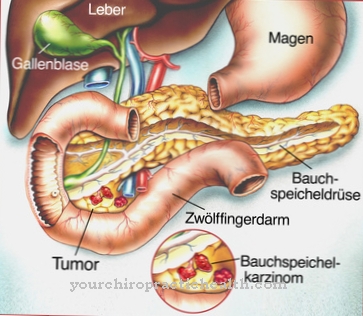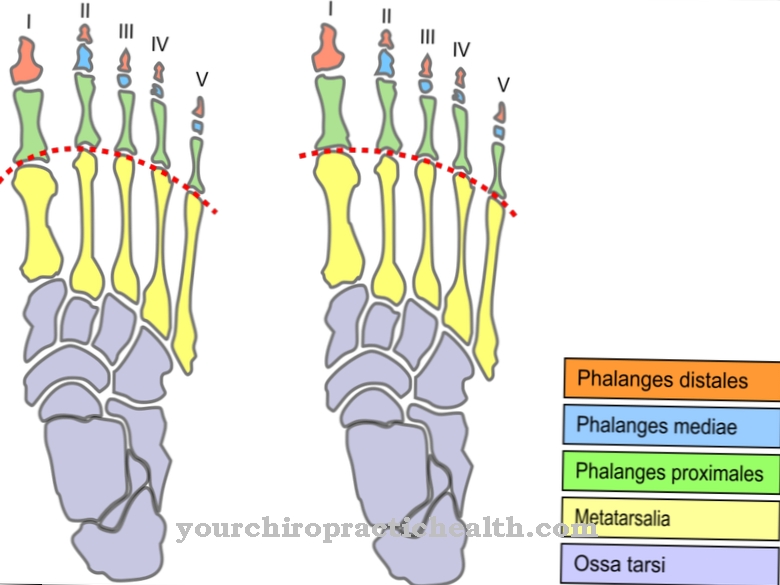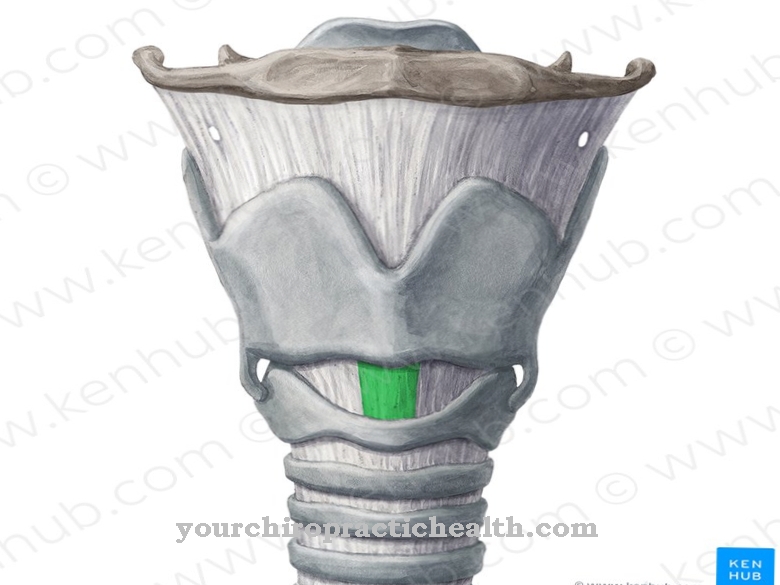In which Temporal lobe it is the second largest lobe of the cerebrum. It fulfills several important functions.
What is the temporal lobe?
The temporal lobe is also called Temporal lobe, Temporal brain or Temporal lobe known. It forms part of the cerebrum and is the second largest lobe after the frontal lobe. The temporal lobe is a varied part of the human brain, both in terms of its functions and anatomically.
It contains important memory structures, the Wernicke language center and the primary auditory cortex. The temporal lobe forms the lower and lateral sections of the cerebrum. It is differentiated from the frontal lobe (lobus frontalis) and the parietal lobe (lobus parietalis). On the back it is delimited by the occipital lobe (lobus occipitalis).
Anatomy & structure
The temporal lobe can be found within the middle group of skulls, also called the middle cranial fossa. Most of the temporal lobe is in the area above the ears and just in front of them. In the direction of the vertex and occiput, it merges into the parietal lobe and the occipital lobe. The lateral fissure, a deep furrow, separates the temporal and frontal lobes. In the deep is the insula. The two temporal lobes frame the brain stem.
There are usually three cerebral convolutions and two furrows on the lateral surface of the temporal lobe. These are the superior temporalis gyrus, the medius temporalis gyrus, the inferior temporalis gyrus, the superior temporalis and the inferior temporal sulcus. A similar surface relief is found on the middle surface of the temporal lobe. These are the parahippocampal gyrus including the uncus, the medial occipitotemporal gyrus, also called forsiformis gyrus, as well as the collateral sulcus and the lateral occipitotemporal sulcus.
Both the posterior middle part and the basal part of the temporal lobe receive their blood supply from the posterior cerebral artery (ACP). The branches of the arteria cerebri media are responsible for the blood supply to the anterior middle section and the lateral part. The venous blood is collected via the superficial media vena and the descendent superficial vein in the cavernous and transverse sinus.
Function & tasks
The temporal lobe performs some important functions. This primarily includes hearing. The primary auditory center is located within the deep lateral fissure. In the turns it comes to the end section of the hearing path. This is responsible for the transmission of signals from the sensory cells in the cochlea.
The primary hearing center is also called Heschl's cross windings and is only the size of a postage stamp. The tertiary and secondary auditory centers, which are located in the middle and upper turn of the temporal lobe, are significantly larger. Almost the entire cortical surface of the temporal lobe is taken up by them. At the transition point between the middle and upper temporal turn to the cortices of the posterior lobe of the skin there is an overlap of auditory and visual functions. Lexical centers are also located there. They are used to recognize spoken and written words. The most famous center is the sensory Wernicke language center. It is mostly located in the left hemisphere.
Another important task of the temporal lobe is smelling. The olfactory path ends at the uncus (hook). The uncus is a small protrusion that is directed inwards. The amygdala is found under the olfactory cortex and is functionally part of the limbic system. Among other things, the amygdala is responsible for the feeling of fear.
The temporal lobe is also extremely important for human memory. This is especially true of the parahippocampal gyrus, in which the entorhinal cortex is located. This forms, so to speak, an interface between things that have just been experienced and the memory. The entorhinal cortex and the hippocampal formation provide for the input of new memory contents and the retrieval of already existing memories. Despite the extensive knowledge of the temporal lobe, it is still not known exactly what functions are performed in its anterior regions.
You can find your medication here
➔ Medicines against memory disorders and forgetfulnessDiseases
Since the temporal lobe performs numerous important functions, traumatic lesions can lead to serious disorders of this brain structure.
The first known case of illness was recorded in the American worker Henry Gustav Molaison (1926-2008). Molaison suffered from epilepsy that was not successfully treated. For this reason, the medial sections of both temporal lobes were surgically removed in the 1950s. Following the procedure, Molaison developed significant anterograde amnesia. So the patient could no longer insert newly learned things into his long-term memory.
Temporal lobe epilepsy is one of the most common impairments of the temporal lobe. The epileptic seizures arise in the tonsil nucleus, the hippocampus and the adjacent convolutions. With a share of 27 percent, temporal lobe epilepsy is the most common localization-related epilepsy. The appearance of visceral auras and unpleasant feelings in the stomach area are typical features of epileptic seizures. This is followed by smacking and chewing mouth movements, movements all over the body and loss of consciousness. Drug treatment of temporal lobe epilepsy is considered difficult.
If there is a lesion in the associative temporal cortex, this often results in auditory and visual disturbances. This becomes noticeable through problems in identifying faces or objects. Sometimes melodies, rhythms or tones can no longer be recognized.

























.jpg)

.jpg)
